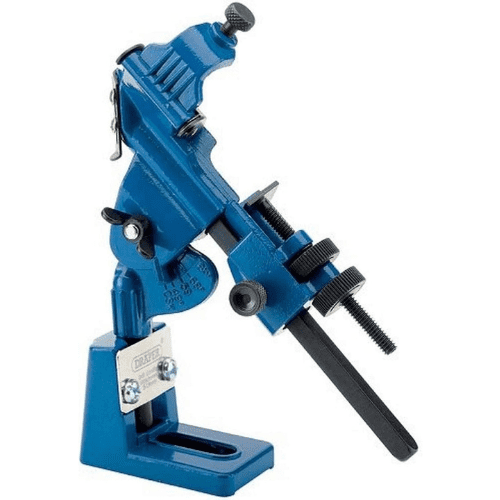Are you tired of struggling to get through a project with a dull drill bit? Frustrated with the time it takes to drill through materials, or the damage you end up causing to your drill bits in the process? It might be time to sharpen those dull drill bits and get back to work with ease and efficiency.
But how do you sharpen drill bits effectively?
In this blog post, we'll go over the various options available for sharpening drill bits, as well as some tips and tricks to help you get the job done right.
Option 1: Bench Grinder
A bench grinder is a power tool with a rotating abrasive wheel that can be used to sharpen drill bits. To sharpen a drill bit with a bench grinder, you'll need to clamp the drill bit in a vice and hold it at a consistent angle while running it against the grinder's wheel. Be sure to wear protective eyewear and follow the manufacturer's instructions for your particular grinder.
The advantage of using a bench grinder is that it can produce a very sharp edge on the drill bit, and it can be a quick and efficient method for sharpening multiple drill bits at once. However, it can be challenging to get the angle just right, and it is easy to overheat and damage the drill bit if you are not careful.
Option 2: Hand File
A hand file is a manual tool with a ridged surface that can be used to sharpen drill bits. To sharpen a drill bit with a hand file, you'll need to hold the drill bit in a vice and use the file to carefully file the cutting edge of the drill bit. This method can be time-consuming, but it can be effective for small or precision drill bits.
The advantage of using a hand file is that it allows you to have more control over the sharpening process and can be a good option for precise work. However, it can be difficult to get a consistent edge with a hand file, and it can take longer to sharpen a drill bit this way.
Option 3: Sharpening Jig
A sharpening jig is a tool that helps you sharpen drill bits at a consistent angle. There are several types of sharpening jigs available, including manual and electric models. To use a sharpening jig, you'll typically clamp the drill bit in the jig and follow the manufacturer's instructions to sharpen it.
The advantage of using a sharpening jig is that it helps you maintain a consistent angle while sharpening the drill bit, which can result in a sharper edge. However, it can be difficult to get the angle just right, and some jigs may be more difficult to use than others.

The Draper is an example of a sharpening jig
Option 4: Electric Drill Bit Sharpener
An electric drill bit sharpener is a power tool that uses an abrasive wheel or honing stone to sharpen drill bits. To use an electric drill bit sharpener, you'll typically place the drill bit in the sharpener and follow the manufacturer's instructions to sharpen it. Some electric drill bit sharpeners are designed to sharpen a specific type of drill bit (e.g. twist drill bits, spade bits, etc.), while others are more versatile and can sharpen multiple types of drill bits.

The Drill Doctor is a electric sharpener
The advantage of using an electric drill bit sharpener is that it can be convenient and efficient, as it does the work for you and can often produce a sharper edge on the drill bit than can be achieved with a manual method. If you're looking for a good one, make sure to check out our guide on the best drill bit sharpeners in Australia. However, it is important to follow the manufacturer's instructions carefully and use caution when operating an electric drill bit sharpener, as improper use can damage the drill bit or cause injury.
Tips and Tricks for Sharpening Drill Bits
No matter which method you choose to sharpen your drill bits, there are a few things you can do to make the process easier and more effective:
- Use a vice to hold the drill bit in place: This will help you maintain a consistent angle while sharpening the drill bit, which can result in a sharper edge.
- Follow the manufacturer's instructions: Each sharpening tool is different, so be sure to follow the manufacturer's instructions for your particular tool.
- Use protective eyewear: When sharpening drill bits, it's important to protect your eyes from flying debris. Wear protective eyewear to ensure your safety.
- Be patient: Sharpening drill bits can take time, especially if you are using a manual method. Be patient and take your time to ensure you get the best possible results.
- Don't overheat the drill bit: Overheating the drill bit can cause it to become brittle and prone to breaking. Use caution when sharpening to avoid overheating the drill bit.
- Know when to replace the drill bit: Sometimes, a drill bit may be too worn or damaged to be effectively sharpened. If this is the case, it's best to replace the drill bit rather than trying to sharpen it.
Conclusion
Sharpening your dull drill bits can save you time and frustration when working on projects, and it can also extend the life of your drill bits. While there are several options available for sharpening drill bits, it's important to choose the method that works best for you and your needs. Be sure to follow the manufacturer's instructions and use caution when sharpening to ensure the best possible results and to avoid damaging the drill bit or causing injury.
